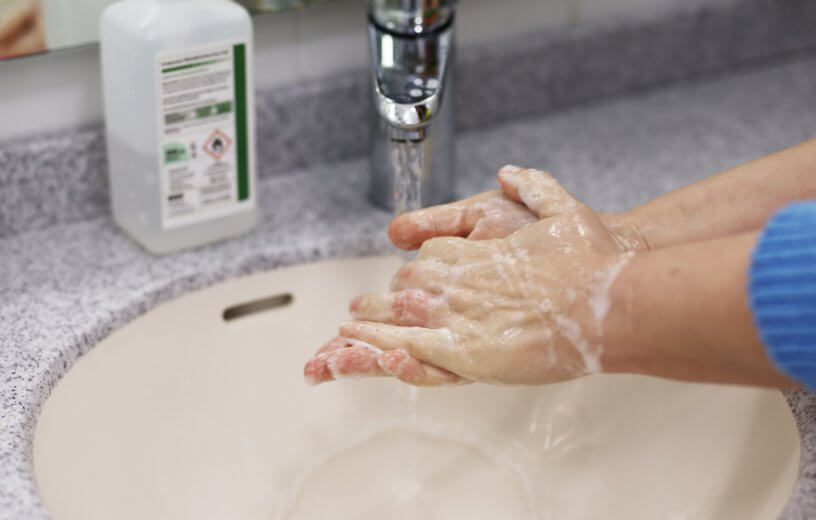READING, United Kingdom — It’s safe to say the world has become pretty obsessive when it comes to washing hands. While good hygiene is key to limiting the spread of COVID-19, our plumbing may be paying the price for it. A new study finds handwashing is actually clogging up sinks with nasty disease-causing bacteria colonies.
Researchers from the University of Reading say bacteria can stay alive and grow in the pipes beneath sinks after people wash them off. The problem may be worse than ever, as surveys find some people are washing 15 times a day during COVID.
Instead of carrying germs away, the study finds pipes provide an ideal environment for bacteria to grow. Depending on what type of plumbing is in place, researchers reveal different types of bacteria can take hold. Coming up with new designs to prevent this from happening is becoming increasingly important with cleanliness now a global issue.
“The mantra to ‘wash your hands’ to fight coronavirus transmission has highlighted the importance of not only good hand hygiene, but also the need for well-designed and regularly cleaned sinks,” says study author Dr. Hyun Soon Gweon in a university release.
“Our study reveals that the significant difference in bacterial families between different buildings shows that a number of factors including occupancy and building design may have a big influence on the types of bacteria we come into contact with.”
What is lurking inside your sink?
Study authors took samples from 123 sinks in “non-clinical” settings, such as toilets and bathrooms in social and teaching areas. Looking at the plumbing beneath the sinks, the team discovered microbe communities dominated by a group of bacteria called Proteobacteria.
This breed of germ includes serious disease-causing strains like Salmonella and E. coli. However, results show the number of these particular strains were low in comparison to others.
“The bacteria that live in our sink drains are shaped by what we are directly putting down them,” lead author and doctoral student Zoe Withey says. “While we expected that bacteria from the gut would have a greater impact, caused by the wider environment of a bathroom, it seems that by and large the bacteria living on the skin of our hands are feeding the community in the drains beneath sinks.”
Researchers also uncovered high concentrations of the common Moraxellaceae and Burkholderiaceae bacteria. While these gems can cause infections, they are mostly harmless to humans.
Certain drains attract certain germs
The study reports the type of plumbing system in use has a “significant effect” on which bacteria becomes more abundant. Sinks with strainers tended to have more Moraxellaceae bacteria, while those with P-trap style drainage have higher amounts of Burkholderiaceae.
“It is possible to spread bacteria to the surrounding areas of your sink, where they can grow and persist,” Dr. Gweon says. “Reducing transmission of bacteria requires thorough disinfection of the sinks and surrounding areas and not just getting your hands wet.”
While all of the sink samples come from places which get regular cleaning, researchers warn that bacteria grows in places which people often miss.
“This means that we need to be very aware that what we are putting down our sinks is affecting the bacterial community underneath,” Withey adds. “These areas may not be reached during routine cleaning, and this could lead to communities containing hardier, resistant microbes.”
Study authors note their results come from before the start of the coronavirus pandemic. They add new studies will need to look at the current impact of increased handwashing on sink bacteria.
“We hope our findings will remind people that the bacteria on your hands often stay alive and capable of growing even after they have been washed off, even in the presence of soap and warm water,” Dr. Gweon concludes.
The findings appear in the journal Environmental DNA.
SWNS writer Tom Campbell contributed to this report.
